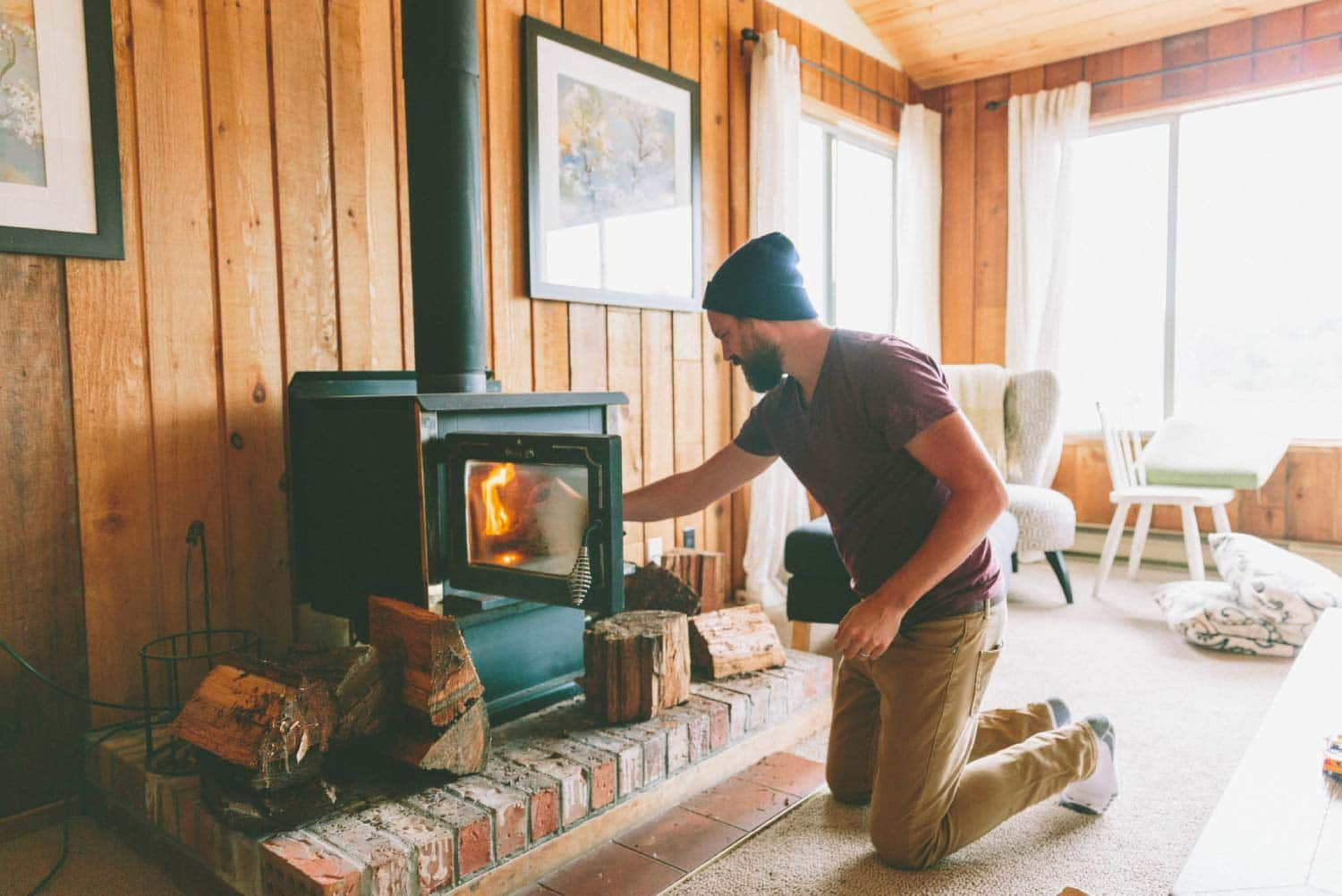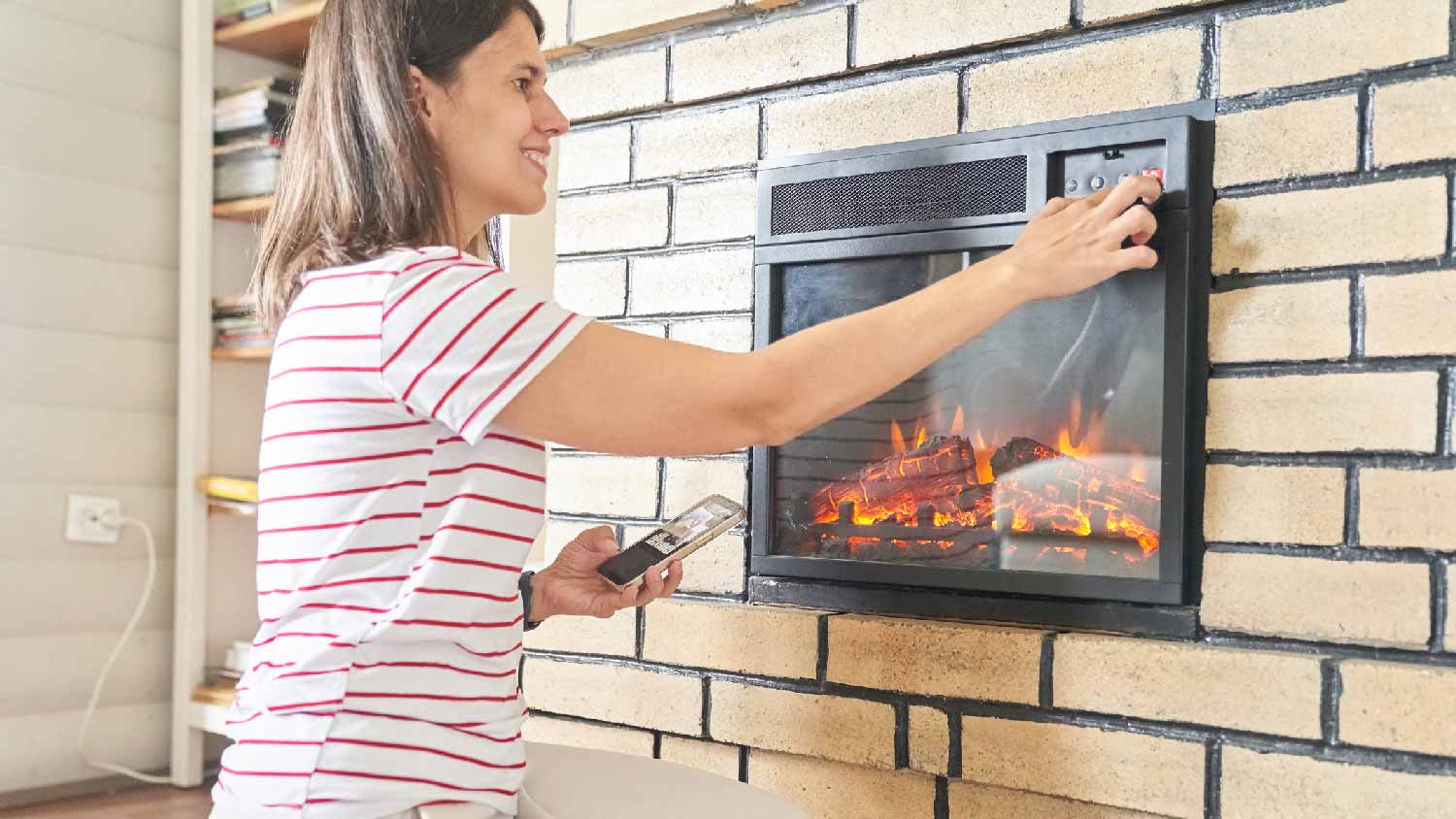
Want a safer, cleaner alternative to your traditional fireplace? Use this guide to determine the cost to convert a fireplace to gas in your home.
Gas fireplaces are convenient, but sometimes there's nothing like the nostalgic crackle of burning wood


Some gas fireplaces, especially factory-built or ventless units, are not structurally designed to handle wood burning and can only be replaced, not converted.
Converting a gas fireplace to wood requires installing a wood-burning insert, with the average cost of $2,500, including labor.
Complex conversions that involve replacing vents, modifying prefab units, or adding a chimney can push costs up to $8,000 or more.
A chimney inspection is mandatory to ensure the structure is safe and properly ventilated prior to conversion.
Over the past few years, gas fireplaces have become more popular than wood-burning fireplaces. In 2021, gas fireplaces rank among the top 10 home upgrades in the United States, but there’s still something to be said about curling up next to a crackling fire as the scent of burning wood permeates your home. You don’t get that with gas, which is why some homeowners convert their units.
Adapting your current setup isn’t as easy as throwing in some logs and hoping for the best. Converting gas fireplaces to wood-burning stoves requires careful planning—if you can even do it at all.

Before you attempt to update your current heating system, you must understand why you cannot burn wood in a gas fireplace that hasn’t been converted—and what can happen if you do. Simply put, wood requires higher temperatures and more ventilation to burn safely and successfully than gas. Not to mention, many gas fireplaces include features like faux logs that are especially flammable.
Attempting to burn wood in a gas stove before making necessary changes can damage your unit and incur hefty HVAC replacement costs for starters. In the worst case, doing so risks releasing hazardous carbon monoxide fumes, exploding the gas line, and even setting fire to your home. The next time you wonder if you can burn wood in a gas fireplace, remember the consequences and say no.
You can’t always convert a fireplace from gas to wood. If the existing structure is in bad shape, a new installation, rather than a conversion, may be necessary. If the existing chimney doesn’t pass inspection, you cannot convert your gas fireplace to wood. Additionally, some prefabricated gas fireplaces aren’t suitable for conversion. Ask your fireplace pro for more specific information.
Before you convert your fireplace, you have to make sure that you can convert it. Some gas fireplaces—particularly the factory-made units that are part of many mini-split installations in newer homes—were never meant to burn wood. They are only gas appliances; you can’t convert them.
Instead, you’re looking at a full replacement, which costs about $2,330, according to HomeAdvisor. If you have a ventless gas fireplace and don’t have a working chimney, building a wood-burning fireplace could cost as much as $30,000. It’s not cheap, but smoke from the burning logs would pour into the room if you tried to light a fire without a vent. Nobody’s lungs want that.
That said, many gas fireplaces can burn wood. You’ll commonly see this in older homes with gas-burning logs installed in traditional fireplaces to make them more accessible for homeowners who don’t want to chop wood constantly. You can convert these fireplaces.
There are plenty of reasons to go from a gas fireplace to a wood-burning one:
You want a traditional aesthetic: Some people prefer the classic look of a wood-burning fireplace to the modern look of a gas fireplace. Plus, nothing beats the relaxing sound of a crackling fire on a cold winter’s day.
Gas is expensive in your area: It may be easier to source wood or more cost-efficient to pay for wood for a wood-burning fireplace than it is to pay for the gas to run a gas fireplace.
Your area has gas fireplace restrictions: Some places have hefty restrictions on gas fireplaces. For example, vent-free gas fireplaces are actually prohibited in California.
Some gas fireplaces are ventless, but all wood-burning fireplaces need proper ventilation. For this reason, it’s a good idea to get your chimney inspected before you convert your fireplace. It may surprise you to find that it needs some work, especially if you haven’t been using or maintaining it.
It’s not uncommon for inspectors to condemn chimneys; sometimes, part of the chimney has been removed or built incorrectly. Other times, like with old masonry fireplaces with clay tiles, things get broken or damaged. A contractor might be able to patch things up, or they might have to re-line the flue with stainless steel. Either way, you must resolve the issue before you can convert the fireplace.
To convert a gas fireplace, you must invest in a wood-burning insert that fits the existing setup. These inserts range in cost from $800 to $4,500, but you’ll also have to factor in what you’ll pay in labor costs, which brings the cost of fireplace installation to roughly $2,500 on average.
However, you may need to increase your budget even further depending on the particulars of your gas fireplace. For example, the vents and box of a prefabricated unit often need to be completely overhauled for proper conversion, and you may need to install a chimney if there isn’t one already in place. All in all, you can expect to pay up to $8,000 or more for everything involved. When in doubt, hire a wood stove company near you to assess your situation and give you a quote to find out exactly what kind of costs you’ll be looking at.

According to the National Fire Protection Association, 1/5 of direct property damage caused by fires was related specifically to fireplaces. Creosote buildup is actually flammable, and it can ignite inside a neglected chimney, potentially leading to dangerous flames.
When ventilation fails or burning creosote leads to particularly fervent flames, it can affect your health. The two big potential dangers are carbon monoxide poisoning and smoke inhalation. All fireplaces carry a carbon monoxide risk, but according to the Environmental Protection Agency (EPA), smoke from wood-burning fireplaces can increase the likelihood of respiratory illnesses, aggravate heart and lung disease, and trigger asthma attacks.
Proper maintenance will help prevent these dangerous issues. After you convert your fireplace, you should have it inspected yearly. If you haven’t already, putting carbon monoxide detectors throughout your home is also a good idea.
Leave a project like this to a professional contractor rather than attempting a DIY because there are serious hazards involved in working with gas lines. Unless you’re a licensed professional, do not attempt to DIY this work—it’s just too dangerous. The pros know exactly how to convert a gas fireplace to a wood-burning stove in a safe way. Here’s what the process typically looks like—but remember that it can vary depending on the type of gas fireplace in place.
Hire a local fireplace installer.
Get approval. You’ll need to double-check that your planned project obeys local building codes and get any permits that may or may not be required to avoid legal issues.
Install a chimney if you don’t already have one, and have it inspected by a licensed chimney cleaner near you if you do.
Remove the gas logs or insert.
Cap the gas line or install a gas log lighter.
Install wood-burning insert.
From average costs to expert advice, get all the answers you need to get your job done.

Want a safer, cleaner alternative to your traditional fireplace? Use this guide to determine the cost to convert a fireplace to gas in your home.

The cost of removing a fireplace insert depends on the type of insert that’s installed. Read on to learn why electric is cheaper than a gas or wood insert.

The firebox handles the brunt of the work in your fireplace. If your firebox is wearing down, check out the average costs of repairs and replacements.

Wondering how to put out a fire in a fireplace? Put down that bucket of water — we’ll show you how to put out fire the right way.

Wondering about the difference between gas versus electric fireplaces? This guide explains the pros, cons, and costs of these popular fireplace types.

Smart chimney inspection questions can help prevent your fireplace from going up in smoke. Here’s what to discuss before hiring a chimney sweep.